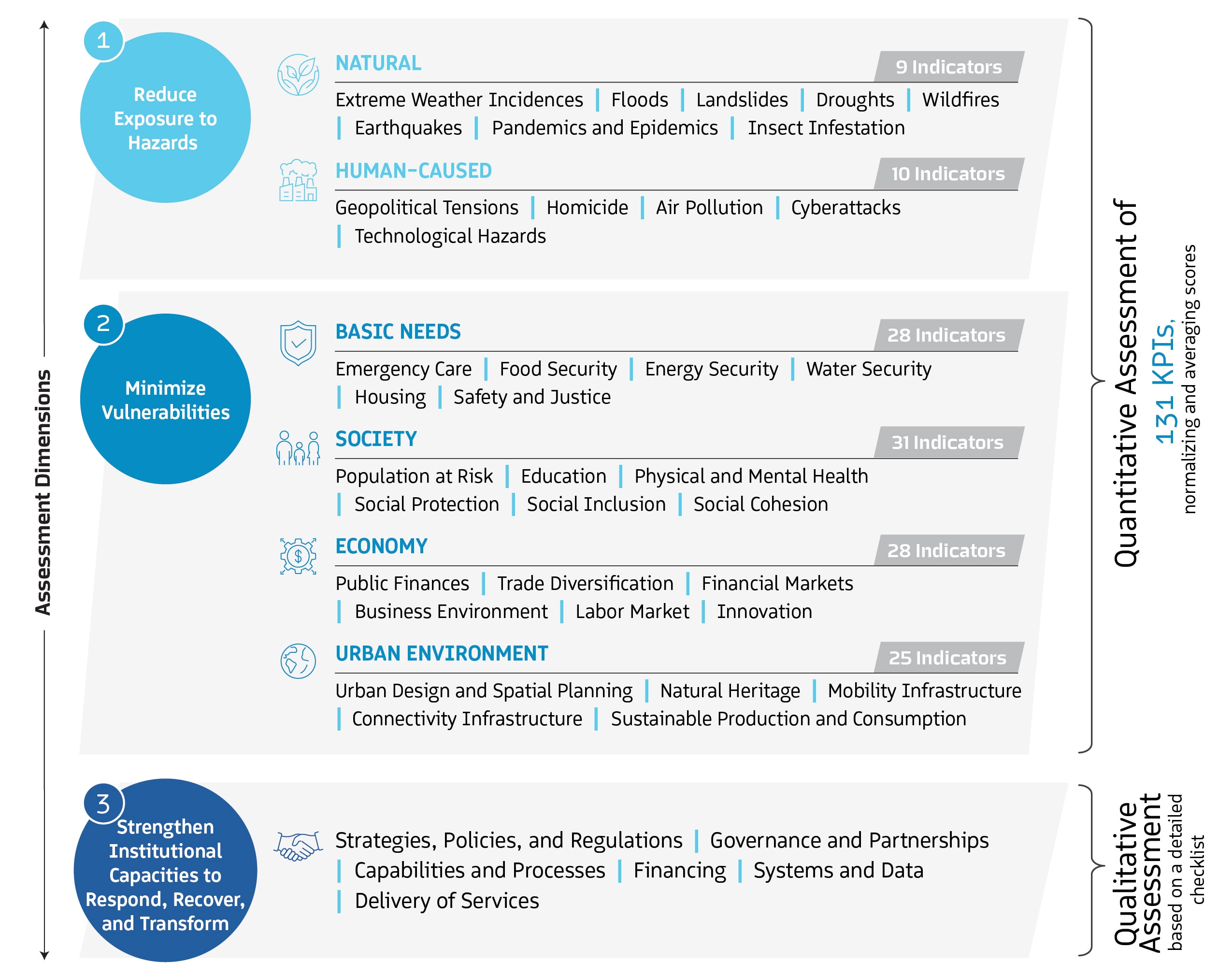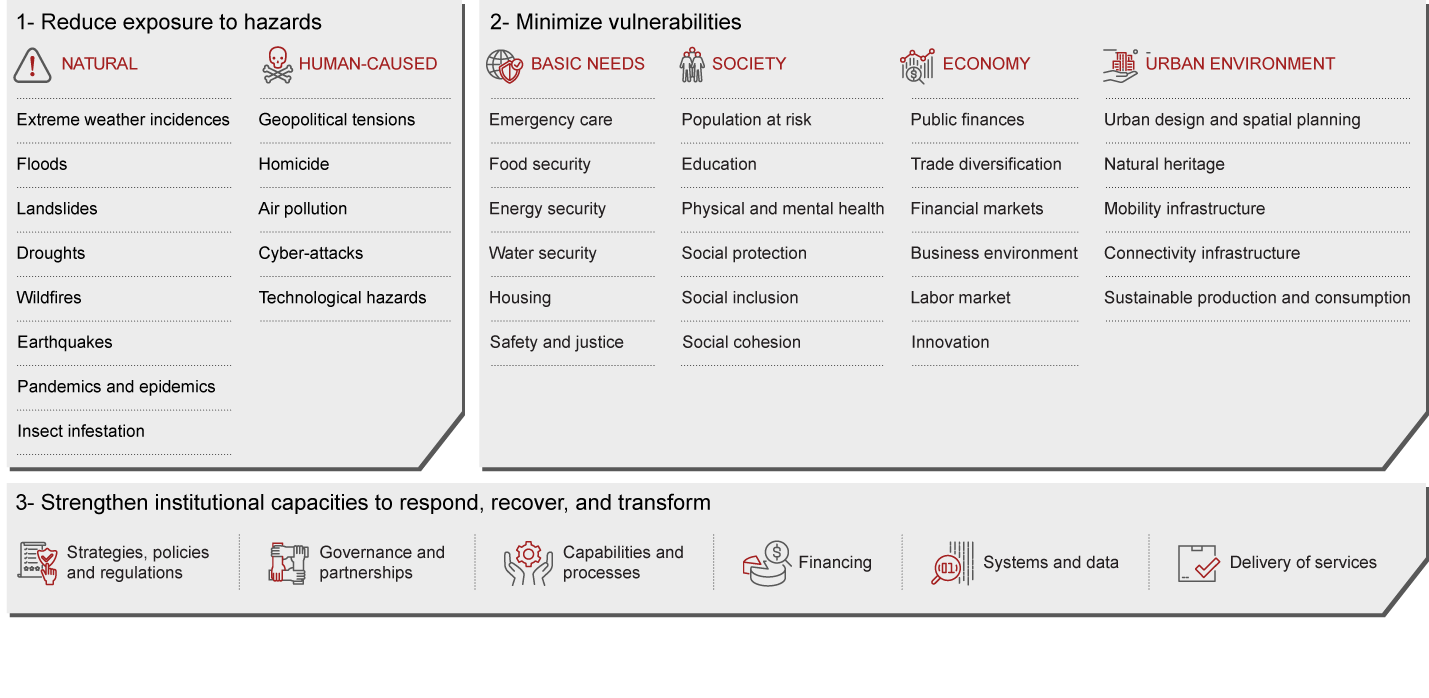Cities worldwide are placing resilience at the top of their agendas to better prepare for future disruptors, such as climate change, pandemics, AI and demographic shifts. What are the essential elements of a successful urban resilience strategy?

Time to thrive: Urban resilience shifts from trend to
A focus on resilience
Urban resilience is the ability of cities to respond, recover, and transform in the face of shocks, stresses, and adversity.



A focus on resilience
Urban resilience is the ability of cities to respond, recover, and transform in the face of shocks, stresses, and adversity.



Our urban resilience assessment framework
Our comprehensive and evidence-based framework enables cities to assess their exposure to hazards, their vulnerabilities, and their institutional capacity to respond, recover, and transform following a crisis. The result is a framework based on 131 key performance indicators (KPIs), a qualitative checklist and an interactive tool that cities can use to assess their resilience and identify the most important priorities to mitigate future threats. In our second edition of the Urban Resilience Index, the list of cities has been expanded from 20 to 50 cities.

Key findings
- All 20 cities in the initial report made notable strides to become more resilient over the past several years. Moreover, MENA cities showed some of the biggest gains in our sample.
- There is still a wide disparity in performance, with leading cities in the US, Canada, and Europe posting higher resilience scores than those in Asia, Latin America, MENA, and Africa.
- The biggest disparities are not in the exposure to threats or vulnerabilities—where most cities have largely similar scores—but in cities’ institutional ability to respond, recover, and transform. Lower-performing cities are improving their scores in this dimension of resilience, yet they still face significant gaps.
The power of innovation
Our analysis suggests that the different dimensions of resilience are interrelated; improvements in one area will trigger benefits in others. Yet the dimension with the biggest impact is innovation, which not only makes cities more economically vibrant and creates jobs, but also leads to corresponding gains in resilience as well. That is a powerful message for city leaders setting priorities among various initiatives: when in doubt, invest in innovation.
An urgent need to boost resilience
As the threats and potential shocks to cities grow, cities must become more resilient. That process starts with information—using our interactive tool to assess a city’s specific exposure, vulnerabilities, and capacity to respond, recover, and transform. Armed with that information, cities can start taking the most impactful steps to improve. Our evidence shows that significant improvements can be achieved within just a few years if cities don’t delay and focus on cohesive and innovative change programs.
2024: Time to thrive
2021: Time to future proof
In the news
Sustainability trends: How to make MENA cities more resilient
Cities need to adopt a holistic and evidence-based framework to guide the building of resilience

Contact us



















Menu